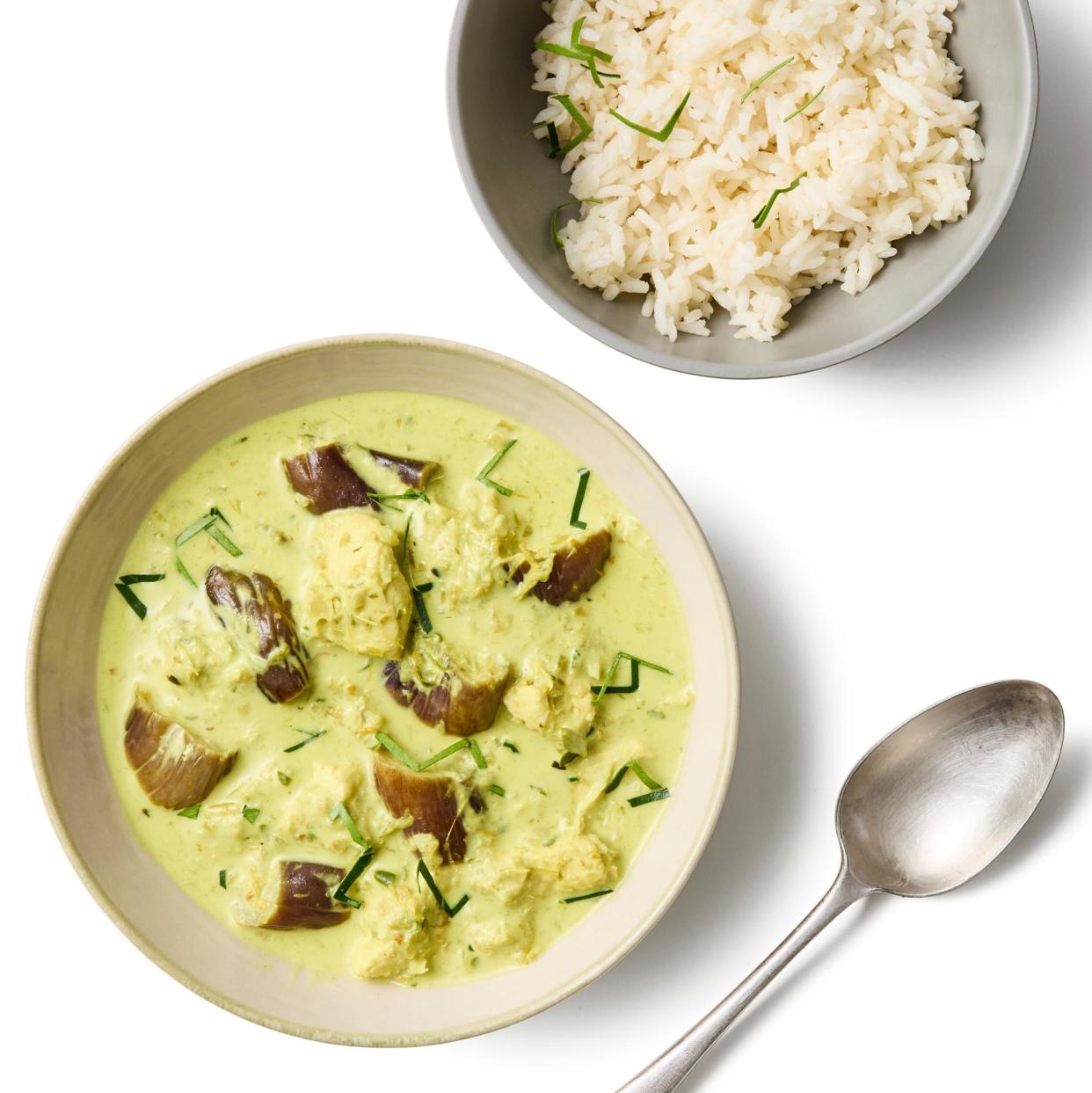How to make Thai green curry – recipe

For many of us in the west, green curry, or kaeng khiao wan, was our first taste of Thai cuisine – indeed, just 30 years ago, the Irish Sunday Independent felt the need to explain to its readers that Thai curries were “very different” from Chinese or Indian ones. Fresh and fiery, this modern classic is still a wake-up call to the palate today.
Prep 20 min
Cook 20 min
Serves 2, and easily doubled
For the curry paste (or see step 1)
20 green bird’s eye chillies
1 tbsp chopped galangal
1 tsp chopped red turmeric
4 lemongrass stalks
1 tsp fresh makrut lime zest, or 2 fresh makrut lime leaves
1 tbsp chopped coriander root, or 2 tbsp finely chopped coriander
4 small Asian or red shallots, peeled and roughly chopped
5 garlic cloves, peeled and roughly chopped
1 tsp kapi (AKA Thai shrimp paste), or, to keep the dish vegan, dark miso
Salt and ground white pepper
Vegetable oil (optional)
For the curry
200g chicken, seafood, pork, beef or tofu (see step 7)
100g pea aubergines, or chopped purple aubergine
5 tbsp coconut cream, or the bit scooped from the top of a tin of milk
1 tsp fish sauce, or vegetarian alternative
½ tsp palm sugar (optional)
180ml chicken or vegetable stock, or coconut milk (see step 8)
Jasmine rice, to serve
1 fresh makrut lime leaf, shredded, to finish
1 A note on the curry paste
Use a bought green curry paste, if you prefer, but if you do so you will inevitably sacrifice some of the aromatic freshness that’s the hallmark of this dish. They vary greatly in strength: chef and author Pailin Chongchitnant recommends the Mae Ploy brand, which is widely available online and in some larger supermarkets.
2 A note on the kitchen tools
If you are making the paste from scratch, wisdom dictates that you will get by far the best results from a pestle and mortar, rather than a food processor. And, to be honest, with such small amounts, it’s really not that much hard work. That said, you may prefer to use a mini-chopper or stick blender for the task.
3 Grind the chilli …
Trim the chillies – leave in all the seeds and their membranes, if you’re a fan of heat, or remove some or all of them if you’re warier of it (remember, you can always add more chillies later, but it’s harder to dilute them without spoiling the dish). Roughly chop the chillies, then pound the flesh to a rough paste.
4 … then grind the galangal and turmeric
Roughly chop the vivid orange fresh turmeric root and the galangal – a pale, peppery root that looks a little bit like ginger and is sold in specialist east Asian stores and some large supermarkets. The turmeric will stain your fingers and everything else it touches, so approach with caution! Add both of these to the chillies and pound again.
5 Add the lemongrass and makrut lime
Remove the papery outer husks of the lemongrass stalks, then roughly chop the softer core. Zest the makrut lime, if you’ve somehow managed to find one (do not substitute an ordinary lime instead), or roughly chop the leaves, which are now sold in most big supermarkets. Add both to the mortar with the coriander root (also found in specialist stores) or stems, and pound again.
6 Add the shallots, garlic and shrimp paste
Add the chopped shallots and garlic to the mix, stir in the shrimp paste (vegetarians could substitute a dark miso, or more vegetarian fish sauce) and a good pinch each of salt and ground white pepper, then pound (or whizz) everything to a smoothish paste. If need be, add a teaspoon or two of oil to bring it all together.
7 Now for the curry ingredients
Prepare the other ingredients – quick-cooking cuts such as boneless, skinless chicken, steak, prawns, pork fillet or firm tofu will all work well – and chop them into bite-sized pieces. Pea aubergines should be used whole, and larger aubergines in chunks. (You could also add, or substitute, other vegetables, such as tinned bamboo shoots etc, as you like – if I have them, I always add fresh green peppercorns, for instance.)
8 Start cooking
Put the coconut cream and curry paste in a medium pan on a medium-high heat and fry until the cream splits and the oil begins to bead on top.
Add the fish sauce and sugar, if using, then stir in the stock or coconut milk – use stock for a hotter curry, and coconut milk for a milder, sweeter one.
Bring to a simmer, add your chosen protein and vegetables, then cover and turn down the heat.
9 Finishing touches
Gently simmer the curry for about 10 minutes, or until the protein and vegetables are cooked through, then taste and add more fish sauce, palm sugar, etc to suit your palate.
This curry should be fairly soupy, so if need be thin it out with a little water, to loosen. Stir in the remaining shredded lime leaf and serve with jasmine rice.


